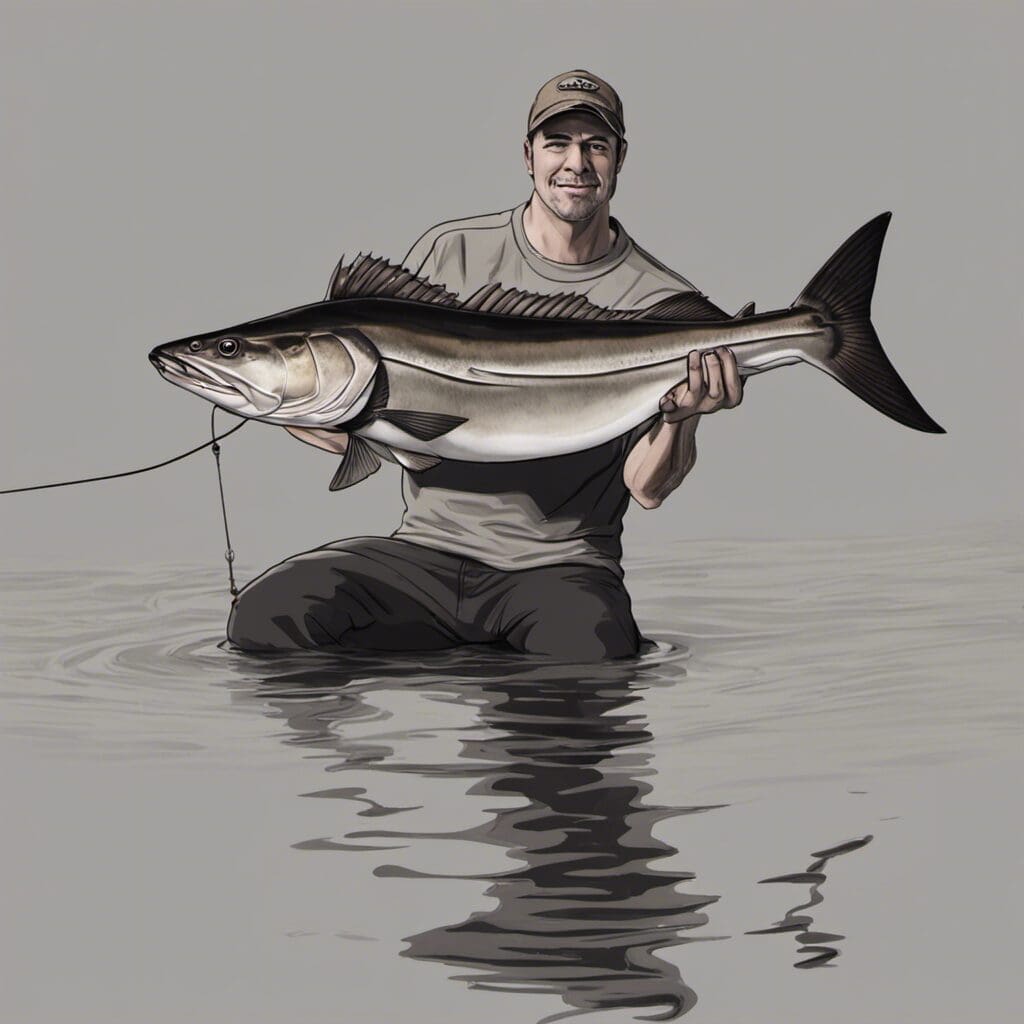Introduction
The Cobia, scientifically named Rachycentron canadum, is an intriguing species in the family Rachycentridae. Known for its robust body and long silver scales, the Cobia is a popular addition to the game fishing community due to its nature of putting up a fight when caught - making it a challenging and rewarding experience for anglers.
Conservation Status
The Cobia is currently listed as “Least Concern” on the IUCN Red List. This tagging is due to the extensive geographic range and lack of potential widespread threats. However, ongoing conservation efforts exist to monitor this species’ population trends and maintain balanced aquatic ecosystems.
Statistics
| Average | Range | |
|---|---|---|
| Length | 100 cm | 75 – 150 cm |
| Weight | 15 kg | 5 – 68 kg |
The average lifespan of a Cobia is around 15 years. Their age is often indicated by their size, as these fish grow rapidly within their first few years.
Distribution
Cobia are migratory fish and are found across the globe. They predominantly inhabit warmer waters, and their migration patterns often follow changes in water temperature. Major regions include the Atlantic Ocean, South Pacific, India, and the Gulf of Mexico.
Habitats
Typically, Cobia live in warm saline waters within a depth range of 0 – 40 meters. Their preferred temperature range is between 24 – 28°C.
When and Where to See
Cobia tend to follow the warmer currents, migrating during the summer months. It is common to spot them during the day when they surface for feeding.
Best Fishing Locations
Some of the best fishing locations for Cobia include:
- Florida Keys, Florida, USA
- Port Canaveral, Florida, USA
- Cape Hatteras, North Carolina, USA
- Andaman and Nicobar Islands, India
- Phuket, Thailand
In general, Cobia are found in warmer, shallow waters and often around markers, buoys, and wrecks.
How to Catch
Preferred baits for Cobias include live eels and small crabs. Techniques such as trolling, bottom fishing, and spinning are effective. The best season for Cobia fishing is summer.
Identification Guide
Cobias are identifiable by their elongated silver-gray bodies, dark bands across the eyes, and a protruding lower jaw. Distinguishable from other species, the fish’s first dorsal fin is only composed of six to nine free spines.
Culinary
Cobia has a rich, buttery flavor with a firm texture, making it highly valued in the culinary world. The fish is low in saturated fat and high in protein. It can be grilled, broiled, or smoked to create tasty dishes.
Additional Information
Largely solitary, Cobia are vulnerable to larger predators like sharks. Historical significance of the Cobia can be found in various cultures, where it’s been an important food source for centuries.
References and Further Reading
For more information about the Cobia, refer to the works of Peter J. Motta in “Feeding Relationships among North American piscivores” and ”Fishes of the Gulf of Mexico” by H. Dickson Hoese and Richard H. Moore

